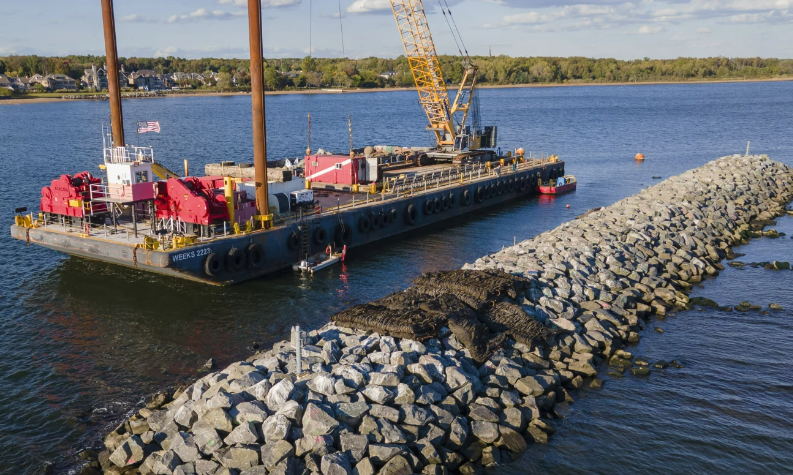
©AP Photo/Ted Shaffrey
Vocabulary:
- devastation /dev-uh-STEY-shuhn/
- ecosystem /EE-koh-sis-tuhm/
- hybrid /HAHY-brid/
- revitalization /ree-vahyt-l-ahy-ZEY-shuhn/
- intensified /in-TEN-suh-fide/
[noun] – great destruction or damage, often causing severe harm
The wildfire left behind widespread devastation, impacting both the community and local wildlife.
[noun] – all living things in an area interacting with each other and their environment
Pollution can severely disrupt a forest’s delicate ecosystem, affecting plants and animals alike.
[adjective] – having a combination of elements
This new car model is hybrid, combining electric and gasoline power for efficiency.
[noun] – the act of bringing something back to a healthier or more active state
The city invested in the revitalization of old neighborhoods to attract new businesses.
[adjective] – made stronger or more extreme; heightened
The intensified competition led teams to develop more innovative strategies to win.
Article reading:
Funded by $111 million from post-Sandy recovery allocations, the “Living Breakwaters” system has become a pioneering example of hybrid infrastructure, blending environmental restoration with coastal defense. Observations from nearby communities, such as Florida’s Cedar Key and Seattle, reveal a growing interest in similar initiatives. Seattle has already built a $400 million seawall to safeguard its coast while also establishing habitats for young salmon. Moreover, New York City continues to expand its coastal defenses, including a $600 million seawall along parts of Staten Island and floodwalls for Manhattan’s East River. While some local residents question the long-term resilience of the breakwaters against severe storms, increased marine activity has signaled ecological revitalization, indicating that this innovative approach may serve as an effective countermeasure to the intensified storms driven by climate change.
Discussion Questions:
- Have you ever experienced a natural disaster, like a storm or flood? If so, how did it affect your community? If not, how do you think such events could change a place?
- Do you have any memories of environmental projects in your area, such as planting trees or cleaning up parks? If so, what was your role in that project? If not, what type of project would you like to see in your community?
- Do you agree that urban areas need more green spaces to support biodiversity?
- What are the potential risks and benefits of hybrid infrastructure projects like the “Living Breakwaters”? How might these projects affect local communities and the environment?
- What are some alternative strategies that could be used to combat climate change aside from infrastructure improvements? Which strategies do you think would be the most effective, and why?
Summarization
Describe:
- minimal
- concrete
- oyster
- pollution
- approach